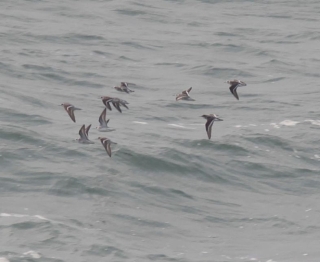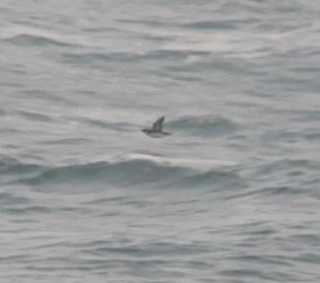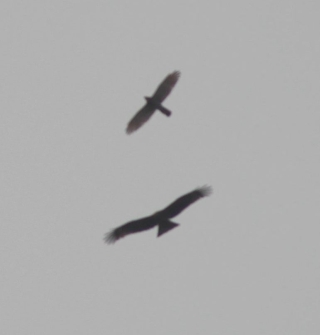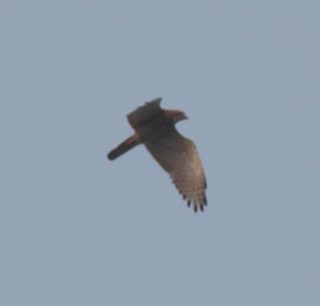A week when most of the action was at sea, seabirds and incoming migrants.
Starting with the seabirds, Red-necked Phalarope were passing in small flocks all week with a total of 364 by the end of the week, but that’s just for the limited time I was seawatching. Probably several thousands all together. Another four Ancient Murrelet this week plus the quality bird, a Black-legged Kittiwake that passed by on Wednesday morning.




Incoming migrants included several fine-looking Little Egrets, a flock of 13 Oriental Pratincoles, a regular passage of Barn Swallows and this Grey-faced Buzzard on Thursday morning drifting over from Dangan, inspected closely by the resident Black Kites but allowed to pass without interference (they would never do this with an incoming migrant Black Kite!)



On the land, a single Ferruginous Flycatcher left over from last weekend, but also many wintering species still around to keep the photographers happy, including the long-staying Black-naped Monarch, more than five singing Red-tailed Robins, Japanese Thrush as ever almost impossible to see and even a late Red-flanked Bluetail on Thursday.

Two potential HK First records have already been recorded in March – Red-crested Pochard on 9th March in Mai Po and Brown-backed Needletail last Saturday 24th March on Po Toi. I think it’s no co-incidence both of these records occurred on the day after frontal system passed through Hong Kong


I’m not sure what migration route the Pochard was on but the Needletail would probably have become caught up in a group of Silver-backed which left the Philippines heading north for East China/Taiwan and met the front over the sea, being pushed west into the Hong Kong area

It’s always dangerous to predict but there is another cold front due this Saturday so Sunday may be a good day on Po Toi – possibly Grey-faced Buzzard, Oriental Cuckoo, Brown Hawk Owl, Dollarbird and some more flycatchers to keep the punters happy
[
Last edited by wgeoff at 30/03/2012 07:21 ]


